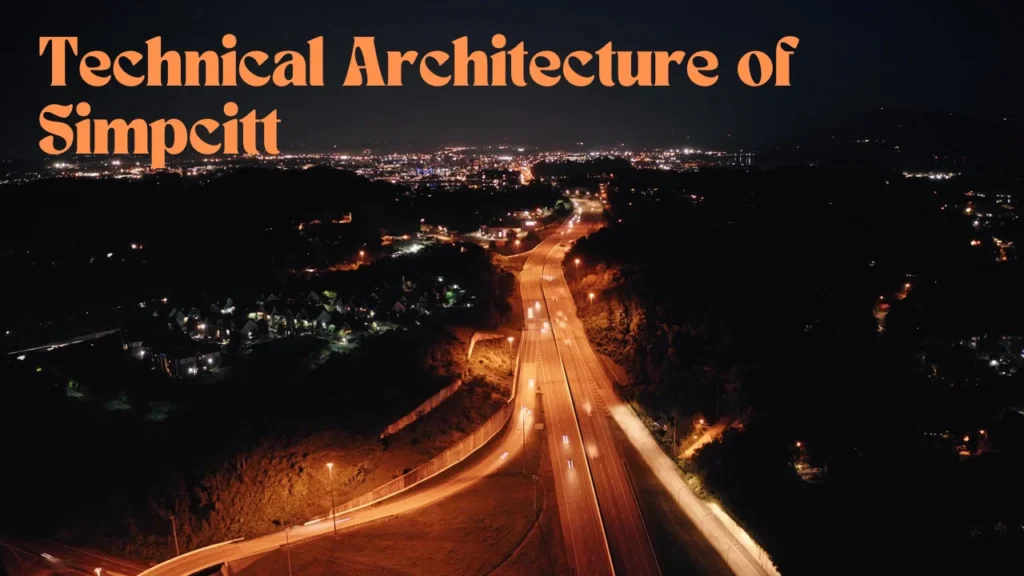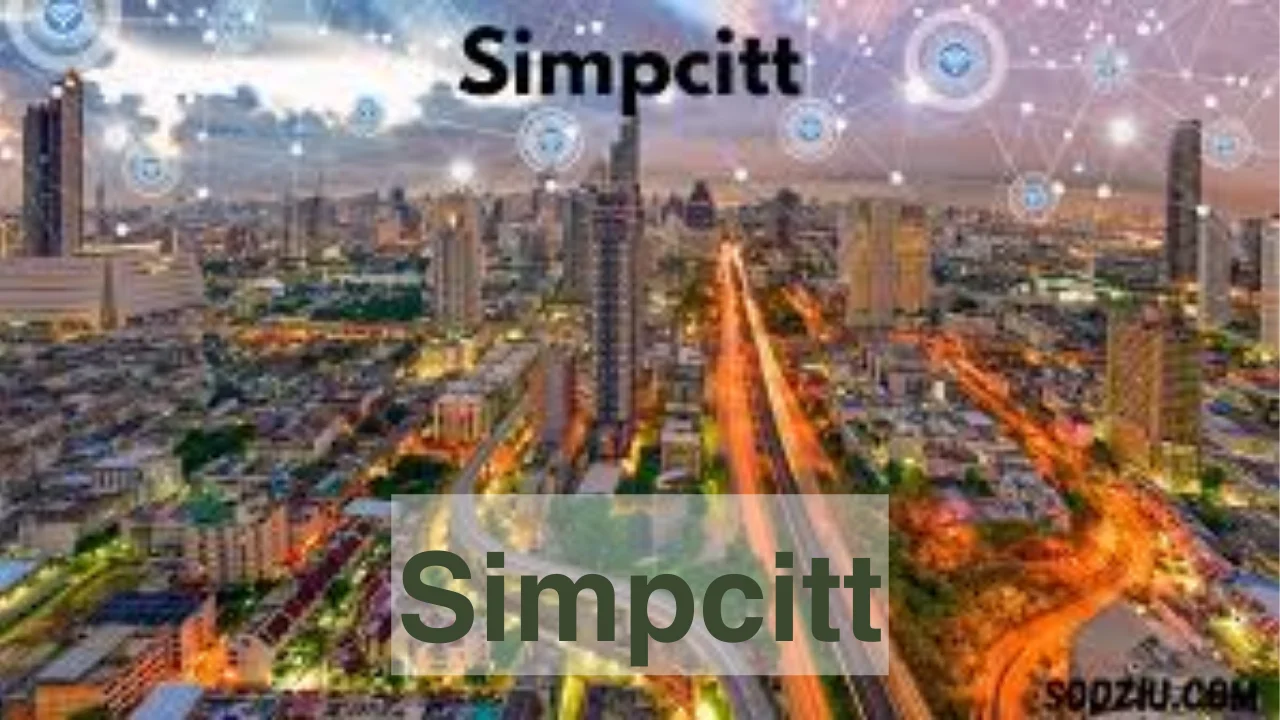In a world where technology evolves rapidly, the concept of a city is no longer limited to roads and buildings. Simpcitt is a decentralized virtual city where technology, culture, and community governance come together. This futuristic platform has over 200,000 active users daily, participating in decision-making, live mapping, and digital events. It is reshaping how people engage in urban life—without any physical limitations.
Unlike other digital platforms, it is not just a game or a social network. It is a functioning urban simulation with intelligent urban technology, transparent governance, and sustainable goals. In this blog, we explore how it works, what makes it unique, and why it may represent the future of digital cities.
Also Read: Increditools: Expert Analysis on Emerging Tech Solutions
What Is Simpcitt?
It is a decentralized digital city powered by blockchain, artificial intelligence, and real-time user input. It provides a smart and immersive urban environment online. People can vote on city planning, explore interactive maps, host events, and even own virtual property. The city is built and managed by its citizens using open-source tools and transparent governance models.
It represents a blend of:
- Technology: Using smart contracts, AI planning, and blockchain.
- Culture: Hosting global celebrations and preserving identities.
- Governance: Citizens vote on development and policies.
- Sustainability: Virtual infrastructure follows eco-principles.
Features That Power the City
It is more than a 3D world. It is a responsive, data-driven simulation. Below is a table that highlights its key features and what they do.
| Feature | Description |
|---|---|
| Interactive Maps | Real-time navigation and event locations with custom views. |
| Community Voting | Citizens propose and vote on projects and policies. |
| Smart Urban Tools | AI-driven models simulate traffic, energy use, and building layouts. |
| Decentralized Governance | No central authority; every decision comes from citizens via blockchain. |
| Event System | Cultural and community events hosted in virtual plazas and theaters. |
These tools allow users to take part in shaping their surroundings every single day.
How Governance Works in It
Governance is the backbone of it. It uses a Decentralized Autonomous Organization (DAO) structure. Each citizen holds voting power depending on participation and tokens earned. Unlike traditional cities, where decisions come top-down, it works from the ground up.
Every proposal—from street naming to infrastructure design—goes through a clear four-step process:
- Proposal Submission
- Public Forum Discussion
- Token-Based Voting
- Automatic Implementation via Smart Contracts
This system ensures fairness, transparency, and accountability. No one person or company controls it. The people do.
The Community That Powers It
What makes it truly special is its people. Over 200,000 daily users join events, build digital homes, and collaborate on civic decisions. Each person adds something to the culture, structure, or governance.
Citizens can:
- Propose new zoning rules or transport systems.
- Host digital art exhibits or concerts.
- Design new parks and upload 3D models.
- Attend governance training for better participation.
It fosters cooperation rather than competition. Citizens grow the city while also building their identities within it.
Cultural Awareness in It
It isn’t just about infrastructure. It’s about people and identity. Culture is not just welcomed—it is required. The platform celebrates major global events like Eid, Lunar New Year, Diwali, and Pride Month. These events are organized by community teams who plan performances, exhibits, and discussions.
Citizens can:
- Build temples, mosques, churches, or cultural centers.
- Submit traditional clothing styles for avatars.
- Teach others through storytelling zones and virtual museums.
This cultural integration promotes tolerance, learning, and respect. It shows that virtual spaces can build bridges across borders.
Technical Architecture of Simpcitt

It relies on multiple cutting-edge technologies to operate smoothly. Below is a table outlining its architecture:
| Component | Technology Used |
|---|---|
| Identity System | Decentralized ID linked to blockchain. |
| Storage | IPFS (InterPlanetary File System) |
| Smart Contracts | Ethereum-based for all governance logic. |
| Traffic Simulation | AI-powered pathfinding and heat mapping. |
| Rendering Engine | WebGL for browser-based 3D interaction. |
This architecture allows fast scaling, low failure risk, and full citizen control.
Also Read: Coyyn: Empowering the Digital Economy with Financial Innovation
Growth Metrics and Citizen Engagement
It tracks various metrics to ensure transparency and performance. Below are some current stats (as of May 2025):
| Metric | Value |
|---|---|
| Daily Active Citizens | 212,000+ |
| Successful Proposals | 12,550+ |
| Cultural Events Hosted | 2,800+ |
| Average Session Time | 44 minutes |
| Infrastructure Projects Built | 8,900+ |
These figures show active engagement and constant city evolution. It is alive and growing.
Simpcitt vs Other Virtual Worlds
What separates it from other digital cities or games is its purpose. While other platforms focus on entertainment or profit, Simpcitt is about participation, learning, and impact. Below is a short comparison.
| Feature | Simpcitt | Metaverse Games | Social Platforms |
|---|---|---|---|
| Decentralized Governance | ✅ Yes | ❌ No | ❌ No |
| Smart Infrastructure | ✅ Yes | ❌ No | ❌ No |
| Cultural Events | ✅ Regular | ⚠️ Rare | ✅ Some |
| Citizen Ownership | ✅ Full | ⚠️ Partial | ❌ None |
| Focus on Education | ✅ Strong | ❌ No | ⚠️ Minimal |
It is more than entertainment. It is a mirror of what tomorrow’s cities could look like—fair, open, and inclusive.
Why It Is Different
Most virtual worlds focus on gaming or social networking. Simpcitt, on the other hand, acts as a fully participatory society. There is no “developer team” making final decisions—just citizens and code.
Other major differences include:
- Sustainable simulations that mimic real-life issues like energy use or traffic.
- Citizen ownership of assets and land, tracked transparently on-chain.
- No central server, reducing the risk of data manipulation or censorship.
These features make Simpcitt not just a virtual space, but a true societal experiment for the digital era.
Real-Life Applications of It
The tools and systems used in it are not just for fun—they have real-world value. Here are a few use cases:
Urban Planning Testing Lab
Engineers simulate road networks and zoning layouts before building them in the real world.
Digital Governance Training
NGOs use it to train youth in community leadership and participatory government.
Virtual Tourism & Culture
Users from different countries host walking tours through digitally recreated historical cities.
Disaster Response Drills
It has been used to test evacuation and crisis communication plans in a virtual setting.
These examples prove that it is not just fantasy—it is a tool for learning and innovation.
How to Join It: Step-by-Step
Becoming a citizen is easy. Here’s how to start:
- Visit Simpcitt.org and create your profile.
- Connect your Web3 wallet (like MetaMask) to receive tokens.
- Choose your district on the interactive map.
- Attend orientation events for newcomers.
- Propose your first idea or join an existing project.
New users are given starter tokens, digital land, and access to tutorials. Participation starts from day one.
Why It Matters
It matters because it empowers people. It teaches cooperation, governance, and creativity. In a time when digital spaces are filled with ads and noise, it offers a clean, purposeful platform. It reflects what cities could be—equal, interactive, and responsive.
As it continues to grow, it may become a blueprint for real-world cities looking to become smarter and more democratic.
Upcoming of Decentralization
As cities become smarter and technology becomes more human-centered, platforms like Simpcitt are leading the way. It proves that decentralization isn’t just about finance or data—it’s also about how we live, decide, and relate.
Simpcitt is not a product; it’s a process. It’s a shift from passive online experience to active citizenship in a borderless city. As it grows, we may see hybrid models where real cities take cues from Simpcitt’s participatory systems.
This future vision aligns with global trends in sustainability, AI, and urban planning.
Also Read: Simpcitu: The Future of Web Design
Final Thoughts
Simpcitt is a bold idea that brings together everything modern life needs—technology, sustainability, culture, and community. It is not run by governments or corporations, but by people like you. With real voting, real building, and real learning, it shows that digital spaces can lead to better societies.
If you’re ready to be more than just a user—if you want to shape the future—then it’s time to become a citizen of it.
Join, build, vote, and thrive in a city built by everyone.
